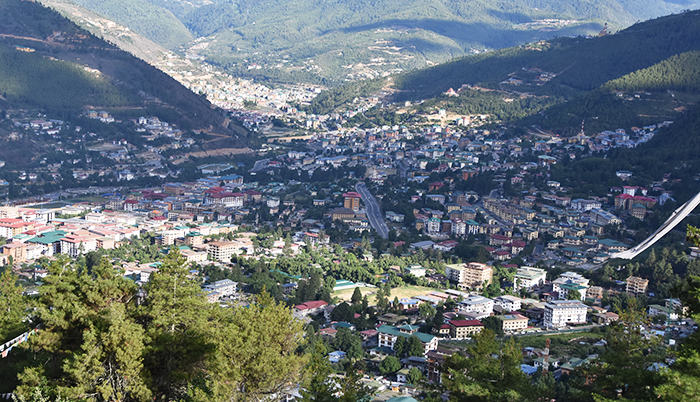Yangchen C Rinzin
The pattern of urbanisation in Bhutan is characterised by an unbalanced distribution, with one primate town, Thimphu with over 100,000 people and two secondary towns, Phuentsholing and Paro.
According to the Rural-Urban Migration and Urbanisation in Bhutan report, launched last week, the three towns together represent 56 percent of the resident urban population and are located in the western part of the country.
In the inter-census period, the total de-facto population of Bhutan increased from 635,000 in 2005 to 727,000 in 2017 where majority increase was in urban areas despite the rural sector accommodated the majority of the population in both censuses.
According to the Population and Housing Census of Bhutan 2017, 64 urban centres were identified including new nine urban created in the 2015 census. Almost half of the 64 urban localities are centres with a population of less than 1,000 people.
Thimphu is the centre with the largest population increase followed by Paro and Phuentsholing. Increase in population in places like Nganglam, Paro and Punakha were partly because of the extension of the town boundaries since 2005.
For places like Paro, the increasing role of the international airport and the rapid development of the tourism industry are other important factors in the population growth. However, town boundaries of Phuentsholing thromde and Bumthang that were also extended did not have effect on the population increase.
The report also stated that the dominance of Thimphu thromde is also because of aspects such as the presence of government departments and agencies, as well as establishment of non-agricultural economic. “The 2018-2019 Economic Census of Bhutan recorded that close to 60 percent of non-agricultural economic establishment were based in Thimphu, 2.6 times more than the second-largest town.”
It also mentioned that more balanced urban hierarchy would distribute even populations, economic, political and cultural power. However, given Thimphu thromde’s large contribution to the total urban population, economic sector employment, the dominance of the public administration, majority of national government services are concentrated in Thimphu.
As urban areas tend to have better education facilities and literate people move from rural, the 59 percent of the urban population attended lower secondary education in urban areas compared to 18 percent in rural.
According to the report, youth and young adult persons are strongly over-represented in urban areas and older persons in rural.
Phuentsholing thromde consist of a largely industrious economy with a high concentration on manufacturing, the report stated, and a less extent on wholesale and retail trade.
“Low contributions are observed by sectors like public administration, construction and education and health services,” the report found. “Employment in Paro town showed even distribution across all economic sector with majority in agriculture and services like tourism.”
Employment in construction work is notably small in Paro town.
The process of urbanisation is expected to continue, given the inequalities between rural and urban areas.
Extended education of younger generation and enhanced rural economy productivity would contribute to curb the ever-increasing part of the population, the report states.


